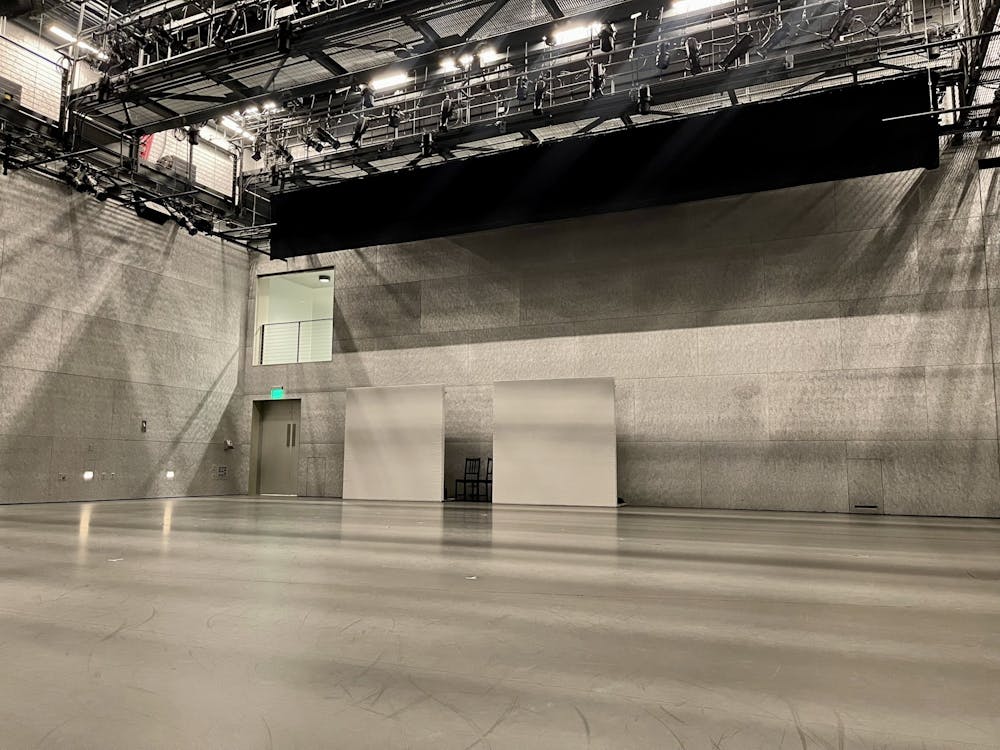Movement became a vehicle for disability justice and spotlighting marginalized voices in performances from Kayla Hamilton and x. On Tuesday, Oct. 25, the Lewis Center for the Arts hosted a two-part movement series, “Intro to Radical Access,” featuring the two award-winning artists with disabilities at the Hearst Dance Theater. Hamilton and x’s choreography and presentations explored themes of accessibility, gender identity, mental health, and race — as well as the intersectionality between these traits.
During the event, accessibility was a focal point beyond just the subject matter of the movement pieces. Hearst Dance Theater was built as an accessible venue, with wheelchair accessible and companion seating locations. The performance also provided open captioning, audio descriptions, and ASL interpreters throughout.
“Intro to Radical Access” was curated by Princeton Arts Fellow Christopher “Unpezverde” Núñez, a choreographer, educator, accessibility consultant, and disability advocate based in New York City. He is visually impaired and facilitates the dance and theater course THR 367: “Introduction to Radical Access: Disability Justice in the Arts” at Princeton.
While introducing the artists’ performances, Núñez stressed the salience of Hamilton and x’s work, stationed at the center of the intimate theater setup. He said, “This is the first time that we get to experience in a more pragmatic, practical way, what access accessibility and access artistry means.”
x, a TRANSdisciplinary artist-curator-community organizer, opened the program with a conceptual and anti-technical approach to movement-driven performance. They took to the stage with heavyweight commentary on mental health resources and identity through a multimedia presentation.
x entered with wide lunges into the space, accompanied by a cold, robotic voice recounting the log of a mental hospital. As they reached the edge of the stage, a screen dropped down to display a casual, vlog-style video of x talking to the camera about their journey with gender, and how they have grown to accept and perceive themselves and their identity.
Accompanied by set changes, costume changes, video, and music, x painted a narrative throughout their performance based on their hospitalization in 2018. They described their piece as a work in progress that started in 2018, without a specific end date.
“When I am working on it, it’s always because ‘Oh, I need to emotionally process this right now,‘” said x. “I often just use my performance work specifically to process my emotions and my experiences. Then, the chips will just fall where they may.”

Meanwhile, Hamilton's performance explored the connection between Blackness and disability. Hamilton is an artist, producer, and educator based in New York. As a dancer with partial blindness, she interrogated how concepts of cultural specificity, the process of normalization, and white supremacy interacted with disability.
Hamilton’s piece was joyful yet solemn, and included playful audience interaction as well as dramatic moments of revelation and reflection through movement. The performance began with Hamilton winding through the rows of the audience, and having brief moments of connection with each person as she said, “I see you.” Every repetition of the phrase took on a different tone.
She followed by picking up a brimmed hat, seeming to offer it to the audience. She gestured to the balls that had been handed out to the audience before the show, patterned like globes picturing a world map, and invited the audience to throw the balls into her hat. Hamilton proceeded to explain how this demonstration mimicked an anecdote in which a slave master watched a working slave make a game by catching pebbles in the stream, but eventually grew angry at the slave’s happiness.
Hamilton explained the relevance of her work to today, saying, “I make the work that I make because it is urgent for the liberation of everybody. As we go through these intense moments of visible racial uprisings, of COVID, of inflation, we all need to be collectivizing to ensure all of our freedoms and our liberty.”

Throughout the raw performances of x and Hamilton, there was a clear conversation with the audience. Their work demanded a dialogue surrounding issues of racism, disability access, and the normalization and interaction of such identities.
Allison Jiang is a contributing writer for The Prospect at the ‘Prince.’ She can be reached at allisonjiang@princeton.edu, or on Instagram @_allisonjiang_.








